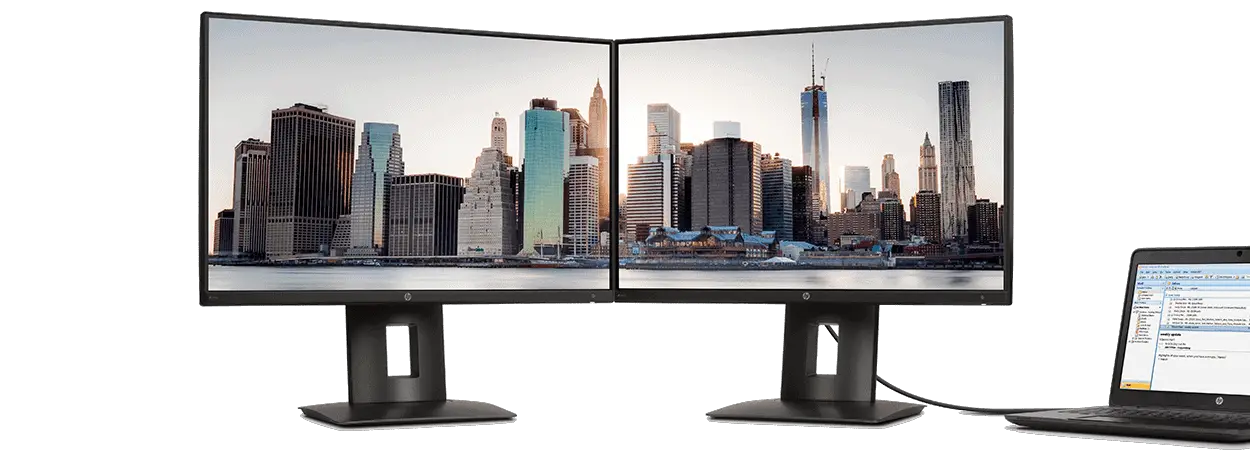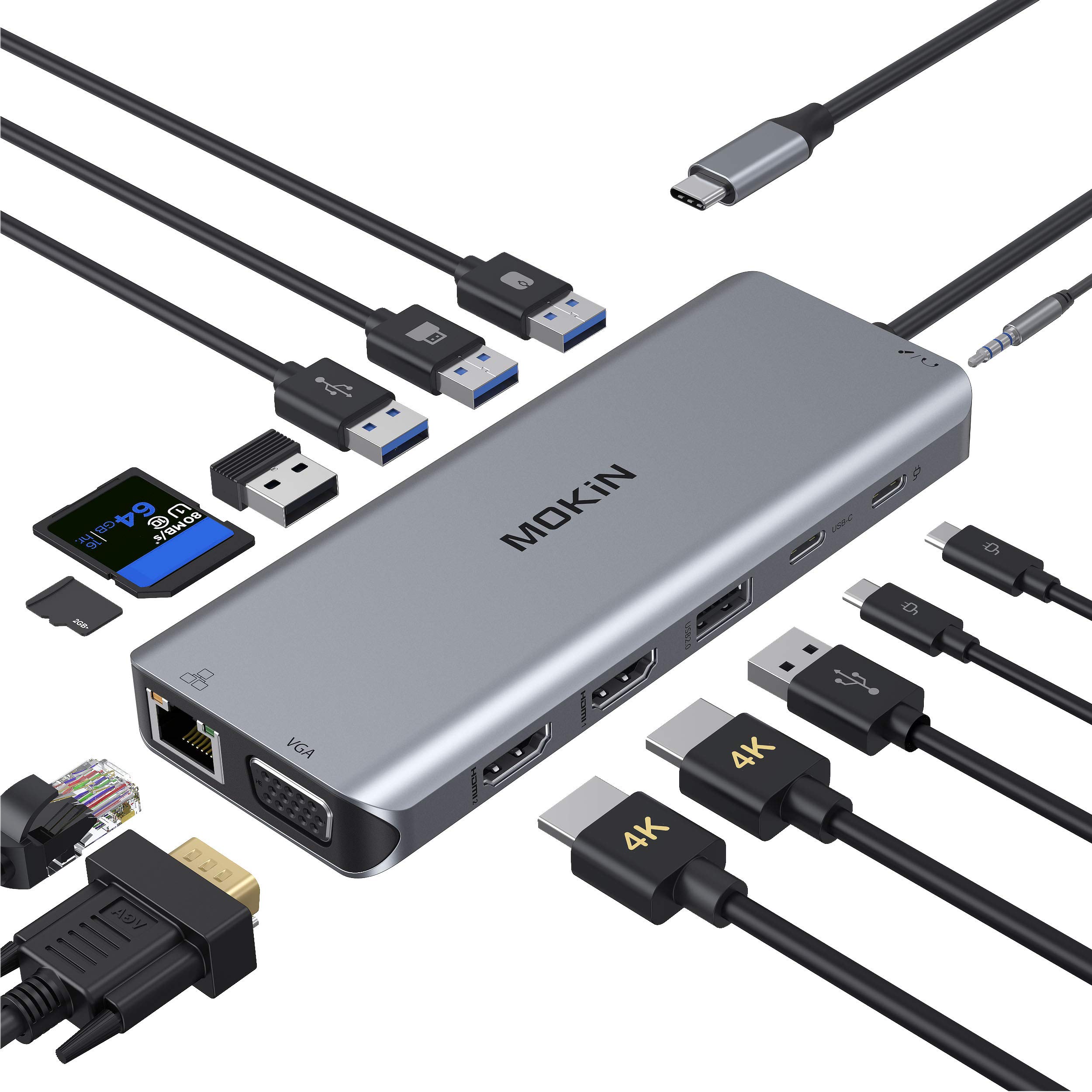As the workplace continues to evolve with technology, so does the need to stay connected. Whether you are an IT professional or a home office worker, having the right equipment can make a big difference in getting your work done. A docking station for dual monitors is a great way to increase productivity and reduce clutter on your desk. But do you need one?
Learn How to Change Mouse Direction on Dual Monitors in our article.

What is a Docking Station?
A docking station, a port replicator, or an expansion base is a device that allows a laptop computer to connect to multiple peripherals simultaneously. With the help of a docking station, many ports and cables can be used in one unit. This makes connecting external devices such as printers, scanners, and hard drives easy with just one plug.
Docking stations generally include connections for most common peripheral types, including USB 2.0, FireWire 400 (IEEE 1394a), and serial port connections. The majority also offer video connections such as DVI-I or VGA for connecting an external monitor or projector. This allows users to use their laptop computers more like desktop computers, making working at various desks or locations more convenient and efficient.

The advantages of using a docking station are numerous. They make setting up devices much easier and quicker than plugging each connection into multiple ports on the laptop computer itself. They also minimize cable clutter by allowing users to daisy-chain various devices together so that only one power source is needed for all the connected devices. Additionally, since all the ports are connected in one unit, it becomes easier to move from one area to another without disconnecting each device.
Using a docking station also ensures that all peripheral devices are easily accessible and quickly detachable when needed; this makes it easy for users to move around with their laptops while keeping all their critical data secure and safe. Finally, because most docks have built-in surge protection features, they provide extra security against electrical surges, which could potentially damage other equipment connected to their computers through the pier.
A docking station offers many advantages over connecting individual cables to each port on a laptop computer. This device allows users to set up their workstations in any location quickly; they can promptly detach all connections when needed; they will experience tangles, reduce potential power surges, and securely store data on external drives and other equipment while traveling with their laptops. All these advantages ultimately make working with mobile computing solutions much more efficient while giving users peace of mind, knowing that their data is protected against unforeseen accidents or events.
Do You Need a Docking Station for Dual Monitors?
No, the docking station is unnecessary for dual monitors if you have a desktop computer. However, docking stations are practical if you want to use the laptop for business, increase productivity, and turn the laptop into a desktop computer. You can connect the laptop using a docking station with a second monitor, external keyboard, mouse, wired network connection, and backup or external storage.
For starters, you must consider what type of monitors you’re using. If they’re compatible with the same docking station, it could be an excellent option for connecting multiple displays simultaneously. This makes viewing different applications on each screen easy without constantly switching between them manually. Additionally, many docking stations offer additional ports, such as HDMI and USB-C connections, that allow users to connect other devices like keyboards, mice, and printers in one place conveniently.
In addition to providing convenient access to multiple displays, docking stations also provide better organization of cables, which helps prevent tangled messes from accumulating underneath your desk. This can help prevent accidental disconnection of peripherals when moving around or bumping into cords. Furthermore, most docking stations are compatible with charging laptops, so you don’t have to worry about insufficient power outlets when plugging in your devices.
A docking station for dual monitors can be highly beneficial if you have compatible monitors and need additional ports for connecting other devices. It will save time by eliminating the need to constantly switch between screens manually and help keep your workspace organized with fewer cables running across the floor. The cost of these stations might seem steep up front, but over time, they can pay off in efficiency gains alone and provide peace of mind knowing that all your devices are securely connected and powered up simultaneously!
- Facebook Ads to Get Followers! - December 27, 2024
- ClickUp vs. Slack - December 20, 2024
- Mastering E-Commerce Analytics: A Blueprint for Success





